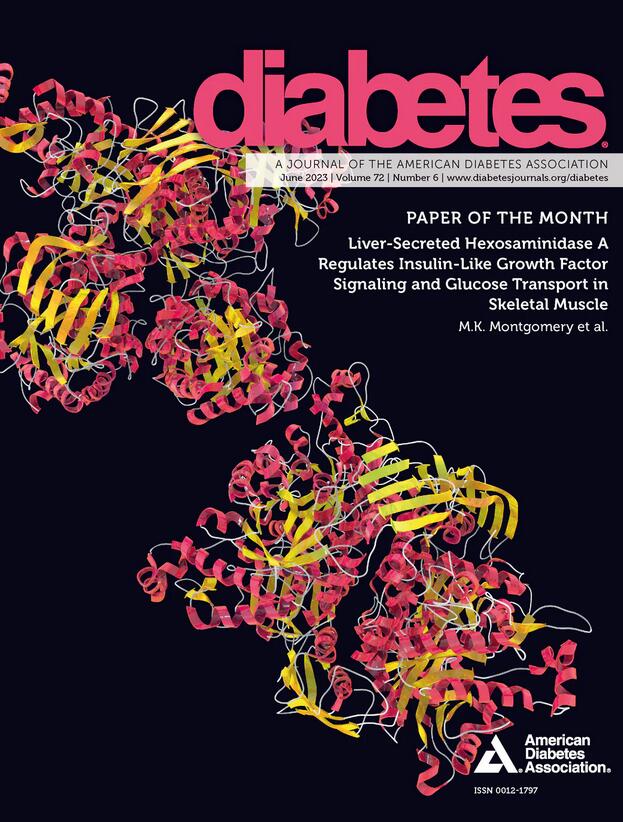57-OR: Enhancing Diabetic Eye Disease Detection through Autonomous Artificial Intelligence Implementation in a Federally Qualified Health Center
IF 6.2
1区 医学
Q1 ENDOCRINOLOGY & METABOLISM
引用次数: 0
Abstract
Diabetic eye disease (DED), specifically diabetic retinopathy (DR) and diabetic macular edema (DME), affects nearly 30 percent of people living with diabetes. Despite the severity of DED, almost half of those living with diabetes do not receive an annual eye exam for diabetes (EED) as recommended by leading professional societies. Zufall Health Center (ZHC), a Federally Qualified Health Center, faced a substantial care gap due to the high demand for annual EEDs surpassing the capacity of their onsite optometrist. In response, in April 2021, ZHC implemented an FDA-cleared autonomous artificial intelligence (AI) system for the detection of DR (including DME) into routine diabetes care. We investigated the impact of AI implementation on patient access to annual EEDs, assessing changes in completion rates before and after. Annual EEDs were defined as completion of an evaluation in the eye for DED by either an eyecare provider or autonomous AI. Completion rates for annual EEDs for patients with diabetes increased from 16.0% (314/1,904) (April 2021) to 35.0% (996/2,819) (June 2023), 529 of which were tested with autonomous AI. Between April 2021 to June 2023, 384 patients received a diagnosis from the autonomous AI. Among all patients examined by the autonomous AI, 24.0% (92/384) were identified as having signs of DED and received prompt referrals to eyecare. 292 patients tested negative, avoiding an unnecessary referral to eyecare. The integration of autonomous AI at the point of care effectively reduces access barriers, resulting in a substantial increase in DED testing rates. Disclosure M. Castro: None. D. Bishop: None. D. Weitzman: Employee; Digital Diagnostics. R. Ramirez: None.57-OR: 通过在联邦合格卫生中心实施自主人工智能,提高糖尿病眼病检测能力
近 30% 的糖尿病患者患有糖尿病眼病 (DED),特别是糖尿病视网膜病变 (DR) 和糖尿病黄斑水肿 (DME)。尽管糖尿病视网膜病变(DR)和糖尿病黄斑水肿(DME)非常严重,但仍有近一半的糖尿病患者没有按照主要专业协会的建议每年接受一次糖尿病眼科检查(EED)。Zufall 健康中心(ZHC)是一家联邦合格健康中心,由于对年度 EED 的高需求超过了其现场验光师的能力,因此面临着巨大的护理缺口。为此,ZHC 于 2021 年 4 月在常规糖尿病护理中采用了经 FDA 批准的自主人工智能 (AI) 系统来检测 DR(包括 DME)。我们调查了人工智能的实施对患者获得年度 EEDs 的影响,评估了实施前后完成率的变化。年度 EED 的定义是由眼科医疗服务提供者或自主人工智能完成眼部 DED 评估。糖尿病患者的年度 EED 完成率从 16.0%(314/1,904)(2021 年 4 月)上升到 35.0%(996/2,819)(2023 年 6 月),其中 529 人接受了自主人工智能测试。在 2021 年 4 月至 2023 年 6 月期间,有 384 名患者接受了自主人工智能的诊断。在所有接受自主人工智能检测的患者中,24.0%(92/384)被确定为有 DED 征兆,并得到了及时的眼科转诊。292 名患者的检测结果为阴性,避免了不必要的眼科转诊。将自主人工智能整合到医疗点可有效减少就医障碍,从而大幅提高 DED 检测率。披露 M. Castro:无。D. Bishop:无。D. Weitzman:数字诊断公司雇员。R. Ramirez:无。
本文章由计算机程序翻译,如有差异,请以英文原文为准。
求助全文
约1分钟内获得全文
求助全文
来源期刊

Diabetes
医学-内分泌学与代谢
CiteScore
12.50
自引率
2.60%
发文量
1968
审稿时长
1 months
期刊介绍:
Diabetes is a scientific journal that publishes original research exploring the physiological and pathophysiological aspects of diabetes mellitus. We encourage submissions of manuscripts pertaining to laboratory, animal, or human research, covering a wide range of topics. Our primary focus is on investigative reports investigating various aspects such as the development and progression of diabetes, along with its associated complications. We also welcome studies delving into normal and pathological pancreatic islet function and intermediary metabolism, as well as exploring the mechanisms of drug and hormone action from a pharmacological perspective. Additionally, we encourage submissions that delve into the biochemical and molecular aspects of both normal and abnormal biological processes.
However, it is important to note that we do not publish studies relating to diabetes education or the application of accepted therapeutic and diagnostic approaches to patients with diabetes mellitus. Our aim is to provide a platform for research that contributes to advancing our understanding of the underlying mechanisms and processes of diabetes.
 求助内容:
求助内容: 应助结果提醒方式:
应助结果提醒方式:


